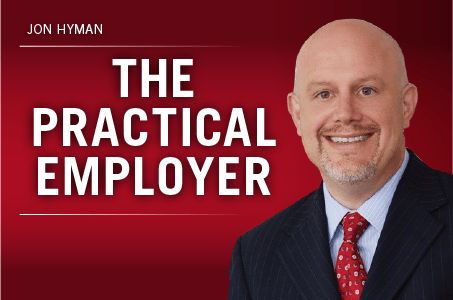We’d all like to believe that the companies we work for are on the up-and-up. That from the top of the organizational chart to the bottom, everyone is on the same page when it comes to honest business practices and integrity.
The reality is that all organizations suffer lapses in ethics and compliance at times. Strengthening a company’s ethics program — and making it central to business strategy — won’t eliminate such lapses, but research shows it can reduce misconduct “by as much as 66 percent in organizations with effective programs,” according to the Ethics and Compliance Initiative, a report based on the findings of a panel of 24 thought-leaders including myself.
A key element of any effective ethics and compliance program involves promoting a “speak-up” culture that empowers employees to report suspected violations early.
Creating a “speak-up” culture puts a premium on ethical decision-making across the board with responsibility shared by all. But setting the tone and promoting that culture rests squarely on the shoulders of organizational leaders.
Their endorsement and modeling create an atmosphere of openness and trust that reassures employees who are understandably anxious about coming forward, whether out of fear of being let go or fear of being ostracized. Leaders who take employee concerns seriously and follow through send a strong message about integrity.
But as the ECI report highlights, there are several desirable and effective practices that broadly apply. They involve formal mechanisms as well as thoughtfulness and creativity.
Provide Multiple Methods for Reporting
One starting place for organizations is to make sure that managers and supervisors receive thorough training in how to respond to and guide employees who come forward. These sessions may also expand to include full team training with hypothetical scenarios or case studies. Simultaneously, the organization ensures that the ethics and compliance policy is clear on how violations are identified and acted upon. Employees must know what constitutes misconduct within the organization and at what point it should be reported. From there, employees need to know the methods available for speaking up.
A high quality ethics program will have multiple methods for reporting concerns. These may include talking confidentially with a supervisor, an ethics and compliance officer or a human resources representative. Use of a company “hotline” or reporting website can also go a long way toward encouraging employees who are more comfortable reporting anonymously. Global organizations should include translation services as needed and the ability to report day or night. Whatever the method, the program should make clear how the complaint will next be handled.
Treat All Reporters the Same
When an employee chooses to report face-to-face, the manager should focus on the investigation of the allegation, not the reporter, no matter how often they have come forward or the perceived seriousness (or lack thereof) of the allegation. This approach will underscore a commitment to addressing problems while at the same time sending a message about consistency and fair treatment for all employees.
Managers may also wish to acknowledge the employee’s courage as doing so may help ameliorate a natural sense of discomfort or fear. Most importantly, the manager must emphasize the organization’s policy of non-retaliation for coming forward. Protecting an employee from blowback from the start and at every step of the way as the investigation proceeds supports a team commitment to resolution by the manager and the reporter.
As the issue proceeds, the organization should check in with the reporter periodically to make sure they have not experienced any retaliation. Substantiated instances must be brought to the attention of senior management and, as appropriate, the board.
For employees who just want to report the initial finding and skip the check-in process, the company can monitor their career success over the long term to get a read on well-being and any possible retaliation.
Acknowledge the Outcome
When a case concludes, where possible the organization will want to close the loop by communicating directly with the reporter about the outcome. Managers should reiterate their gratitude and admiration for coming forward. But the moment also presents a golden opportunity to reinforce the speak-up culture across the board.
Organizations should consider sharing the results with all employees in a manner that does not include identifying details about the parties involved (such as an appropriately scrubbed employee newsletter entry). When the wrongdoing is very public, the organization should generally acknowledge the issues to all employees and the actions it took to rectify them.
Establishing a high quality ethics program with a strong speak-up culture requires thorough planning and commitment. It’s not a simple matter of checking off the one-size-fits-all boxes. Compliance is an ongoing process that requires frequent check-in and check-ups.
But it’s well worth it. Research shows that in organizations with effective ethics and compliance programs, reporting of wrongdoing to managers increased by 88 percent, according to the ECI Report. In the long run, promoting a speak-up culture not only helps to protect an organization from possible misconduct and reputational damage, but it also demonstrates the organization’s commitment to its employees.
Matthew Pachman is the chief risk and compliance officer at FTI Consulting. Comment below or email editors@workforce.com.
 The lawsuit further alleges that the owner fired McCrary in an “alcohol and drug-induced rage” during an all-staff meeting after McCrary had raised health and safety concerns following the outbreak, screaming, “Everyone, everyone Shawn is fired – get the (expletive) out of my company!”
The lawsuit further alleges that the owner fired McCrary in an “alcohol and drug-induced rage” during an all-staff meeting after McCrary had raised health and safety concerns following the outbreak, screaming, “Everyone, everyone Shawn is fired – get the (expletive) out of my company!”












